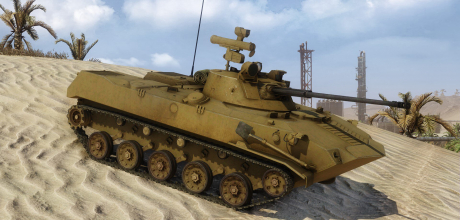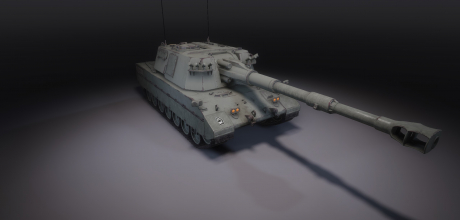
Commanders!
The BMP-1 is often viewed as one of the symbols of Soviet military power. At the time of its introduction to service, it was one of the best IFVs in the world with its sloped armor, powerful armament and the ability to cross bodies of water. Like everything, it had its flaws, some of which were glaring enough to question the quality of the vehicle as a whole. They do, however, start making sense when we take a closer look at the vehicle itself and what it was supposed to do.

Like with many of the other Soviet armor designs, the story of the BMP-1 begins with the Second World War experience – or, more specifically, the war in western Russia, Ukraine, Belarus and, finally, in Europe. In general, the Russians got a good feel for the battlefields and their nature dictated the requirements for future armored vehicles practically until the fall of the Soviet Union. Specifically:
- A lot of emphasis was put on forced river crossing (or any body of water, really)
- Well-developed infrastructure allowed for different designs than what would be required for a prolonged war in the (let’s say) Far East
Additionally, while their own development programs ran at full throttle during the war, the Soviets learned from both their allies and their enemies. While the concept of an APC wasn’t new, during the war, they received large numbers of American halftracks as a part of the Lend-Lease program and they took a close look at them. The Germans used half-tracks as mechanized infantry APCs and these were also thoroughly investigated.
The Soviets didn’t exactly like halftracks all that much – that went for pretty much anyone, including those who produced them after the war, which was basically just Czechoslovakia. But, more importantly, half-tracks in general were more expensive than just wheeled vehicles and the Soviet Union, despite all propagandist proclamations, was in reality really short on cash – after all, the war took a heavy toll on it. It’s worth noting that this was a chronic state of things for the entire duration of the Soviet Union – the Soviets were often able to design some truly advanced and terrifying weapons but couldn’t afford to actually build them in any meaningful numbers.
Combine the lack of funding with the idea of having to fight in the west again (the fear of foreign invasions from Europe was a cornerstone of Soviet military strategies) and what you get is a requirement for something affordable with just enough mobility to be able to handle some light terrain. The solution was to strap an armored chassis on a ZIL-151/157 utility truck. The result was called BTR-152.
The BTR-152 left a lot to be desired for but it had one advantage that outweighed most of its flaws – it was cheap and by 1950, at the height of Stalinist era, the Soviet Union wanted to quickly mechanize 120 rifle divisions. And so it was produced in large numbers, exported to “friendly” countries and was a relatively common sight on the third world battlefields, especially in the Middle East.
The biggest problem of the BTR-152 was that, essentially being an armored truck, it couldn’t keep up with tracked vehicles in rough terrain. The Soviets were aware of that and their next attempt to build an APC was a tracked one. The BTR-50 was based on the PT-76 chassis and was a solid, rugged design, although not without some flaws of its own – for example, its capacity of 20 troops didn’t work well with the organizational structure of Soviet infantry, it was difficult to get out of and it wasn’t heavily armed and thus unable to provide effective fire support. It was clear that something else was needed.
By the end of the 1950s, a series of requirements was formulated for a future IFV, which included:
- Ability to follow tanks through rough terrain
- Considerable firepower to effectively support infantry
- Ability to fight enemy tanks effectively
- Protection from autocannons at 600 meters
- Firing ports allowing the troops to fire from the vehicle
- Observation means comparable to those used in tanks
- Amphibiousness
There were, however, other considerations as well. For one, the prospect of tactical nuclear explosions called for an effective filtration system to protect the people inside the vehicle (that’s where the requirement for the possibility of the carried troops to fire from inside the vehicle originally comes from).
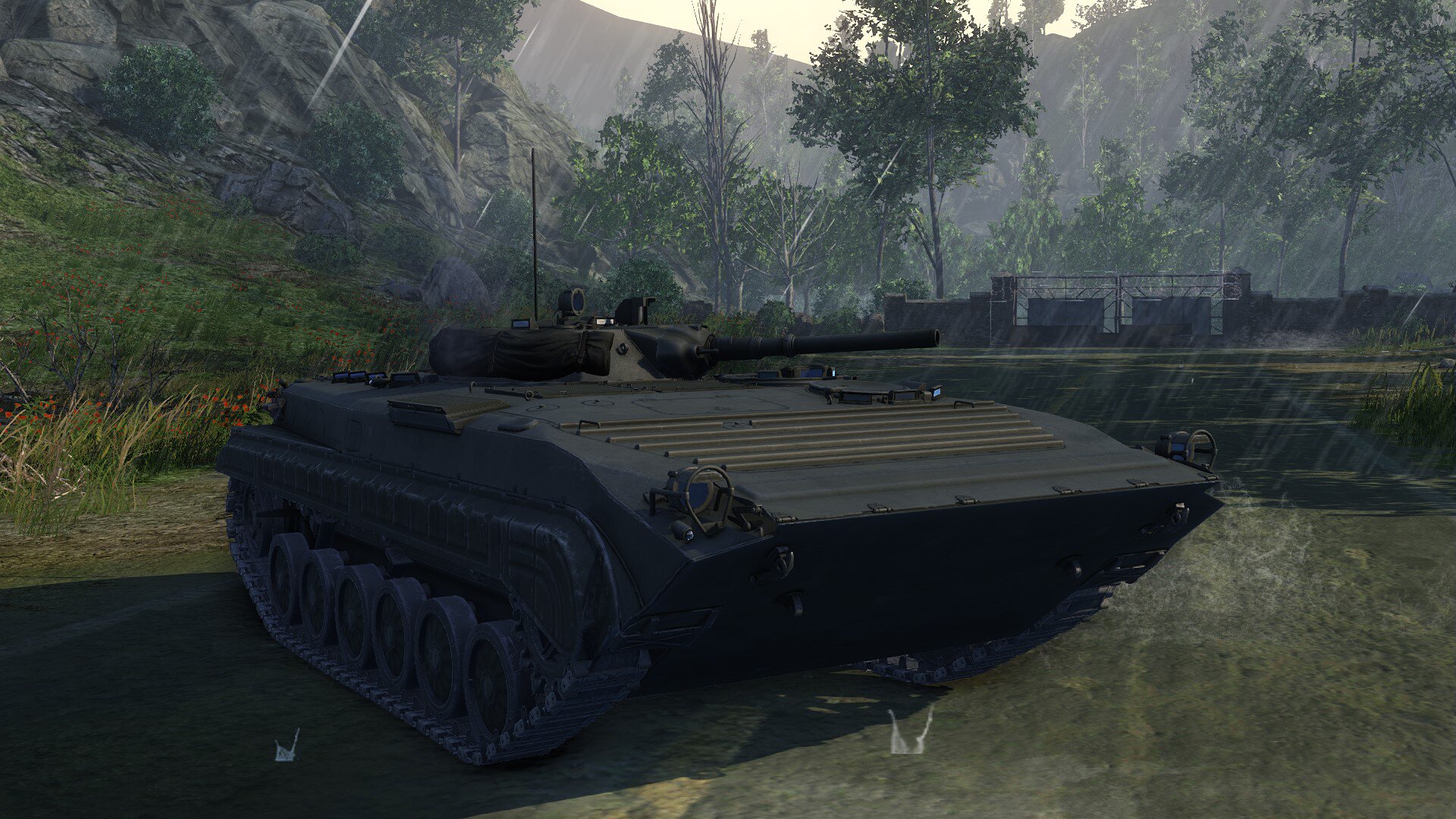
Other considerations weren’t exactly public. First, there was the question of who would be using the vehicles. The answer was simple – infantry. The problem was, the large Soviet army of the 1960s was conscript based and infantry only got the worst of the worst, the conscripts who often had zero technical knowledge and couldn’t be expected to operate advanced equipment. There was also a question of potential exports – the “friendly countries” troops (for example from the Middle East) were often of abysmal quality, several levels below the Soviet conscripts (for comparison, the average literacy rate in the Middle East by 1960 was around 20 percent). There was also the ever-present question of costs. In short, the vehicle was supposed to be of an advanced design, but relatively low-tech.
Or, at least, that was the initial idea. In reality, starting from 1961, the Red Army tested a number of very different candidates, ranging from generally conventional to truly strange wheel-cum-track designs with retractable tracked suspension (Object 911, Object 019). These were naturally quickly rejected for being too complex but one has to wonder why, with the Soviet economy being the way it was, the Soviets were wasting resources on such outrageous and obviously impractical designs.
It’s worth noting that all these prototypes shared the same turret – a one-man turret by Tula, armed with automatically loaded 2A28 Grom 73 mm smoothbore cannon, a light machinegun and a Malyutka missile launcher that could be loaded without the gunner having to exit the vehicle.
After the arduous trials, a vehicle called Object 765, built in Chelyabinsk under P.P.Isakov, was declared the winner – this was the vehicle that would become the BMP-1. It was a low and sleek fully tracked IFV armed with the abovementioned weapon system that could, thanks to its frontal sloped armor, withstand light autocannon fire. It was quite light and generally vulnerable, but that didn’t matter all that much in the grand scheme of things because of the way it was supposed to be used.
However, this outcome had some quite powerful opponents that pointed out the design’s issues. The troop compartment was cramped, the 2A28 gun was nowhere nearly as effective as advertised but, most importantly, the vehicle was relatively expensive. Considering how many infantry divisions were supposed to be using this vehicle, the cost was, once again, too high to equip all the units with this modern IFV.
In the end, it was decided to only give it to those units that were located in Europe and were expected to be the first ones to fight the NATO in case the worst happened. The other units kept their wheeled BTR APCs. Even this wasn’t fully implemented and in the 1980s, a typical mechanized infantry division had two BTR-equipped regiments and one BMP-equipped regiment. Only the mechanized infantry regiments attached to tank divisions were fully equipped with BMPs.

But let us return back to the 1960s, to the launch of the BMP production. The first officers began their BMP training in secrecy in the autumn of 1964 in Chebarkul (Chelyabinsk area) and the first real tests in military conditions began in January 1965. Despite a number of setbacks and teething problems, the tests were successful and the Object 765 Sp.1 entered service in 1966 under the name of BMP-1 (the BMP designation stands for “boyevaya mashina pekhoty” – Infantry Fighting Vehicle).
The mass production launch wasn’t without its problems either as the originally intended producer, the Chelyabinsk Tractor Plant, was unable to muster the capacity to produce the BMP-1 and the tractors it was working on until that point. Fifty vehicles were supposed to be produced until the end of 1965 but when the production didn’t even begin by September, the whole issue became highly politicized and was solved on the highest levels of Soviet government. Ultimately, it was decided to move the entire production to Kurgan. The production of the BMP-1 ran from 1966 to 1983 with some twenty thousand built in the Soviet Union itself.
As early as in 1966, a license production contract was signed between former Czechoslovakia and the Soviet Union, which included plans to produce the BMP-1. The first vehicles rolled off the assembly lines in 1968 and the BMP-1 (under the designation of BVP-1) was mass-produced in Slovakia (Podpolianské Strojárne Detva and ZTS Dubnica nad Váhom) between 1970 and 1987 with 17,295 built (excluding the specialized BMP-1 versions). Based on the Warsaw Pact production distribution, Czechoslovakia became the main producer of BMP-1/BVP-1 for the entire east bloc. Poland originally intended to license-produce the vehicle as well but ultimately it was deemed too expensive. Finally, China produced several thousand unlicensed copies under the name of Type 86 IFV (also known as ZBD-86 or WZ-501).
The first photos of the vehicle appeared in public in 1967 and caused a shock in the west. The BMP-1 looked very futuristic and Soviet propaganda was advertising it as the most powerful vehicle of its kind. It certainly was powerful, but as we mentioned above, there were some drawbacks to it.
We already discussed the price and the fact it was cramped – it was very fast and it had a low silhouette, but during the testing of several captured vehicles, it was found out that only 25 percent of western troopers found the inside of the vehicle not too cramped (in winter kit, the number dropped to 15 percent). This was a major problem and while the original vehicle could carry 8 men, some armies reduced this number to 6 men in order for the space inside to be more comfortable.
The troops exited the BMP by using its rear door. This was an upgrade over the need to jump off from some other vehicles like the BTR but it wasn’t as comfortable as the rear ramp of the American M113 for example. The problem was, the door was hollow – it served as a fuel tank. At first glance, this was a stupid idea – why would anyone fill the BMP-1s rear door with fuel, even if the vehicle was small and fuel space was at a premium? To understand the logic, we have to realize what the vehicle was intended for – large scale operations on the plains of Europe with wide fronts stretching for many kilometers. Under such conditions, the chance of it getting fired at from behind was relatively small so statistically, this wasn’t really a drawback.
Thankfully, such a conflict never happened and the only European operation of the Warsaw Pact was an invasion of one of its members where no-one fired back. The BMP-1 did, on the other hand, find itself in a number of low-intensity conflicts where this turned out to be a weakness and many users subsequently never used the door as a fuel tank or even filled it with sand for extra protection.
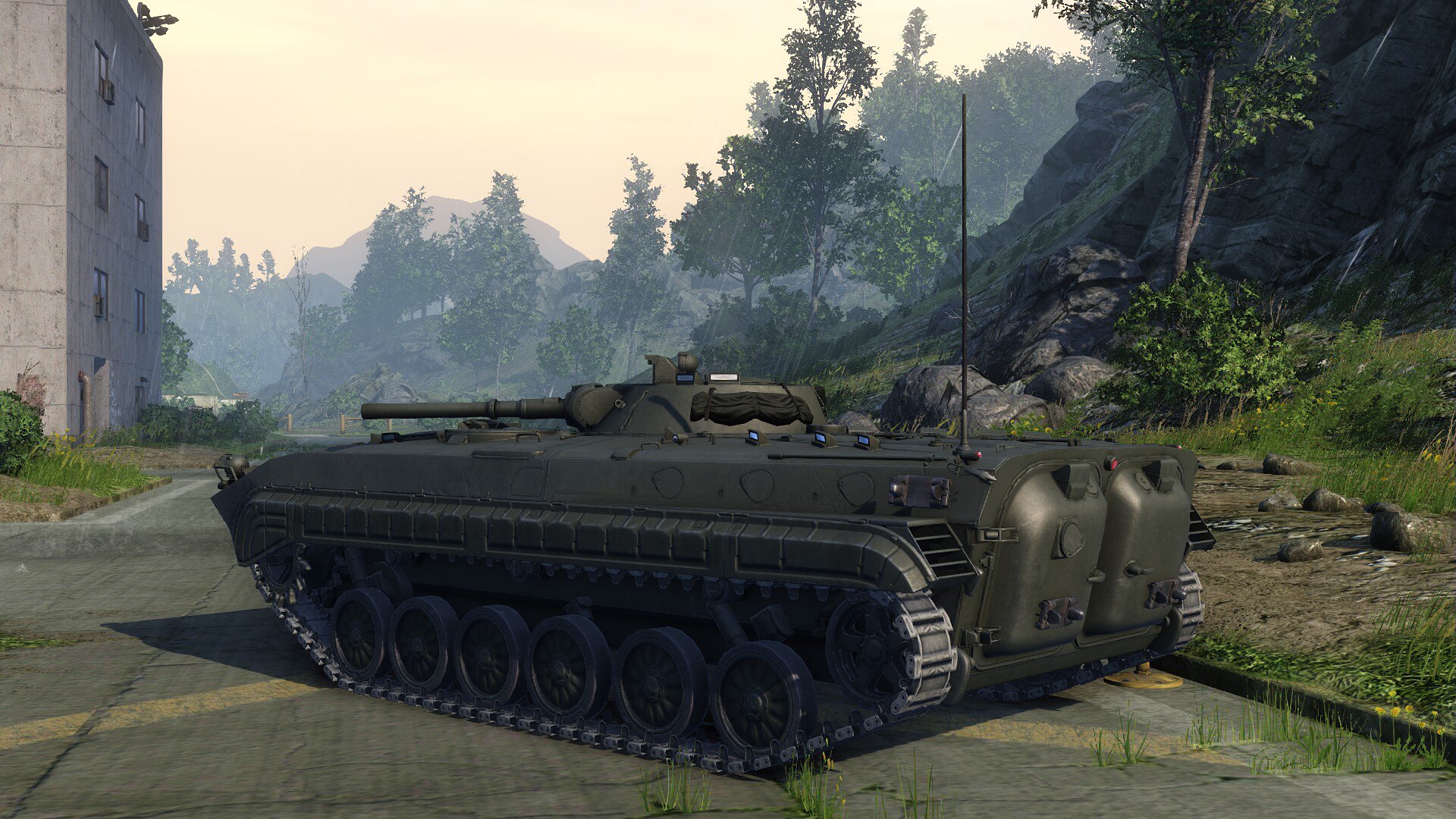
The abovementioned problem is only one of the issues stemming from the fact that the BMP was not designed as a defensive vehicle – on the contrary, it was meant for large-scale assaults. Other issues coming from this concept include, for example, the inability of the commander to properly see to the right and to the back of the vehicle. After all, the vehicles were supposed to go forward, driving the capitalists in front of them instead of fighting retreating battles. The automatic loading mechanism in the turret was generally also a source of problems. It tended to jam if not properly maintained and some troops preferred to disable it altogether and load the gun by hand.
But, despite everything, the vehicle was fairly successful and established a benchmark for the modern IFVs. Since the start of the Czechoslovak license production and the exports that followed, it appeared in many major conflicts. Its high point was the 1973 Yom Kippur War where Syrian and Egyptian BMP-1s and the ATGM teams they carried decimated the pride of the IDF, its tank forces, during the opening days of the conflict.
Nevertheless, despite these early successes, the conflict ended in a disaster for the Egyptians and Syrians both and pointed out the flaws of the BMP design that were subsequently investigated by the Soviets and eventually led to the creation of its successor, the BMP-2. The process is described in our series of articles:
In the meanwhile, the BMP-1 soldiered on. After the fall of the Soviet Union, the world markets were flooded with Warsaw Pact surplus and the BMPs found their way pretty much all around the world. They are still being used to this day, although, as the experience from the recent conflict in Ukraine shows, they are already obsolete and extremely vulnerable, especially to modern ATGMs and other infantry weapons.
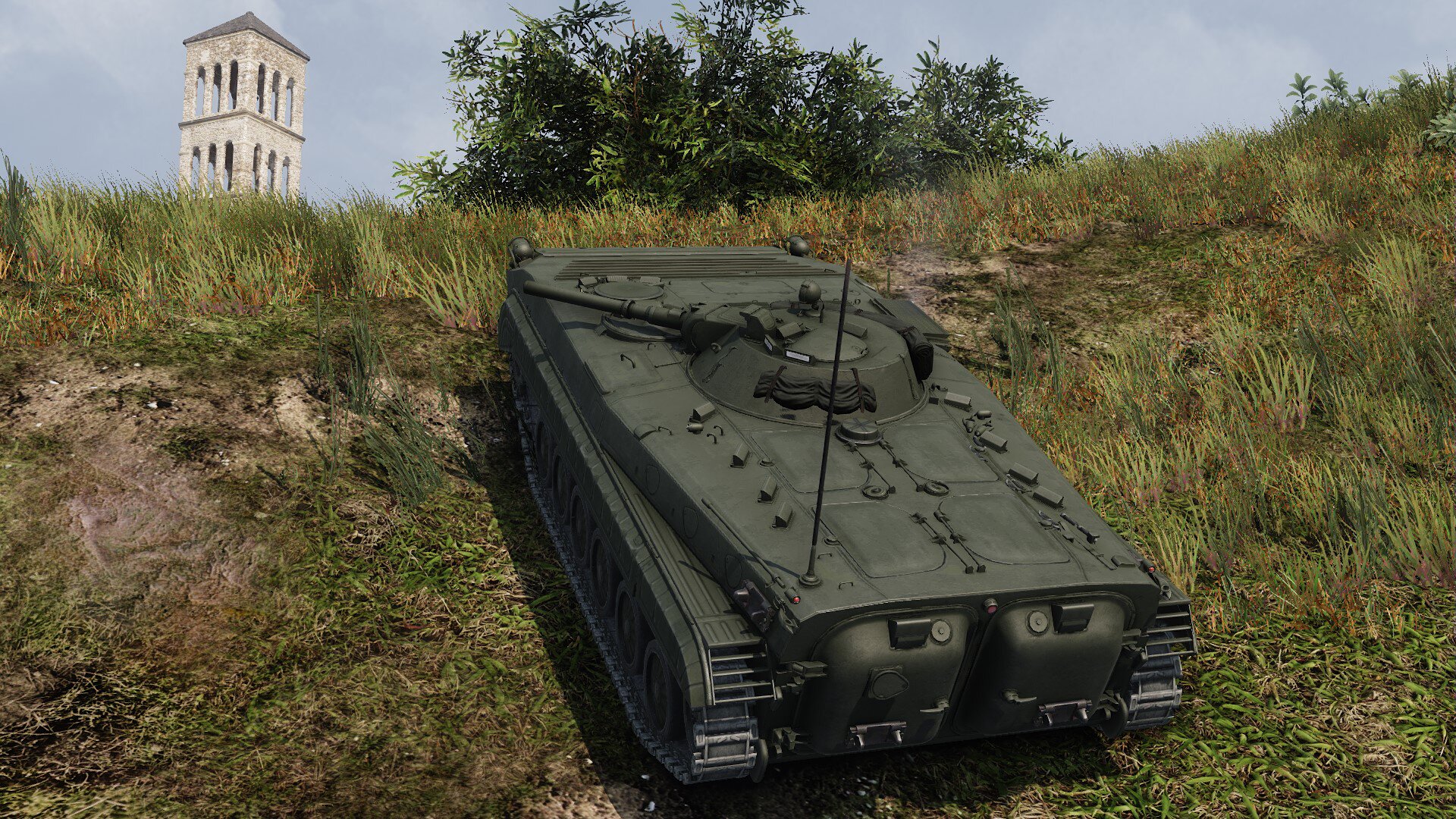
In Armored Warfare, the BMP-1 is a Tier 3 Armored Fighting Vehicle, available in the AFV branch of Sophie Wölfli’s vehicle pool. It shares many similarities with another Soviet era Tier 3 AFV, the BMD-1 – but where the BMP-1 was made for infantry, the BMD-1 was made for paratroops. The BMP-1 is larger, has more hitpoints and slightly thicker armor but it also has lower view range, camouflage factor and mobility (especially agility). It is more a fire support vehicle than a real scout and its 73mm gun and ATGM combination can do massive damage.
The key to success is to stay hidden and not attract undue attention, especially in PvE. Enemy fire can make short work of any BMP due to the general lack of armor even though its sloped front can sometimes resist light autocannon shots.
The BMP-1 has very poor gun depression – choose your positions carefully in order not to get into situations where you can’t return fire because the enemy is below you. Stay behind bushes and use your supreme mobility and massive damage per shot to ambush the enemy.
We’ll see you on the battlefield!




